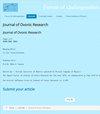The size dependence and defect induced room temperature ferromagnetism of ZnO and Zn 1-x-y AlxZyO (Z=Mg/Ni) nanocomposites
IF 1.1
4区 材料科学
Q4 MATERIALS SCIENCE, MULTIDISCIPLINARY
引用次数: 0
Abstract
In the current research, Al-Mg-ZnO and Al-Ni-ZnO nanocomposites were synthesized by using simple soft chemical route. Prepared nanocomposites of Al-Mg-ZnO and Al-Ni-ZnO with capsule shape distributed magnetite nanostructured were carried out under the calcinated at 120 C for 12 h in furnace. The structural morphology and characterization analysis of as prepared nanocomposites was analyzed by XRD, UV–vis. FTIR, PL, TEM, VSM studies. XRD analysis confirmed the highly pure crystallized cubic phases. The XRD peaks show that the crystalline sizes are of the order of 22 nm, 19 nm, and 11nm. Magnetic property of the prepared nanocomposites was discussed in room temperature using VSM measurement. In spite of a number of researchers reporting the effect of codoping ZnO nanoparticles (NPs) with two different metals was modify the properties of the entire system such as enrich in room-temperature ferromagnetism. In this research we tried to by experimentally observed the magnetic properties of a series of soft chemical synthesized Zn1-x-yAlxZyO (Z=Mg/Ni) nanocomposites. Interestingly, it was found that in comparison to un-doped ZnO NPs and co-doped with two different metals. The ferromagnetic signal changes in a co-doped system in which one of the Mg/Ni ions increases the concentration of defects mechanism when Mg/Ni ions exhibited only one oxidation state. The potential role of charge transfer ferromagnetism is involving Mg2+ and Ni2+ ions substituted into ZnO lattice, The origin of magnetism in the nanocomposites is due to exchange interaction between local spin polarized electrons and the conduction electrons. The potential role of charge transfer ferromagnetism involving mixed valence ions and effects defect mechanism was used to explain the room temperature ferromagnetism.ZnO和zn1 -x-y AlxZyO (Z=Mg/Ni)纳米复合材料的尺寸依赖性和缺陷诱导的室温铁磁性
本研究采用简单的软化学方法合成了Al-Mg-ZnO和Al-Ni-ZnO纳米复合材料。在120℃炉内煅烧12 h,制备了具有胶囊状分布磁铁矿纳米结构的Al-Mg-ZnO和Al-Ni-ZnO纳米复合材料。采用XRD、UV-vis对所制备的纳米复合材料进行了结构形貌和表征分析。FTIR, PL, TEM, VSM研究。XRD分析证实了高纯度的立方相结晶。XRD峰显示,晶体尺寸分别为22 nm、19 nm和11nm。在室温条件下,采用VSM测量方法对制备的纳米复合材料的磁性能进行了研究。尽管许多研究人员报道了两种不同金属共掺杂ZnO纳米粒子(NPs)的影响是改变整个体系的性能,如在室温下增强铁磁性。本研究试图通过实验观察一系列软化学合成的Zn1-x-yAlxZyO (Z=Mg/Ni)纳米复合材料的磁性能。有趣的是,与未掺杂的ZnO NPs和共掺杂两种不同的金属相比,研究发现。当Mg/Ni离子仅呈现一种氧化态时,其中一种离子增加缺陷浓度的共掺杂体系中铁磁信号发生了变化。电荷转移铁磁性的潜在作用涉及Mg2+和Ni2+离子取代ZnO晶格,磁性的起源是由于局部自旋极化电子与传导电子之间的交换相互作用。利用混合价离子的电荷转移铁磁性的潜在作用和影响缺陷机理来解释室温铁磁性。
本文章由计算机程序翻译,如有差异,请以英文原文为准。
求助全文
约1分钟内获得全文
求助全文
来源期刊

Journal of Ovonic Research
MATERIALS SCIENCE, MULTIDISCIPLINARY-PHYSICS, APPLIED
CiteScore
1.90
自引率
20.00%
发文量
77
期刊介绍:
Journal of Ovonic Research (JOR) appears with six issues per year and is open to the reviews, papers, short communications and breakings news inserted as Short Notes, in the field of ovonic (mainly chalcogenide) materials for memories, smart materials based on ovonic materials (combinations of various elements including chalcogenides), materials with nano-structures based on various alloys, as well as semiconducting materials and alloys based on amorphous silicon, germanium, carbon in their various nanostructured forms, either simple or doped/alloyed with hydrogen, fluorine, chlorine and other elements of high interest for applications in electronics and optoelectronics. Papers on minerals with possible applications in electronics and optoelectronics are encouraged.
 求助内容:
求助内容: 应助结果提醒方式:
应助结果提醒方式:


